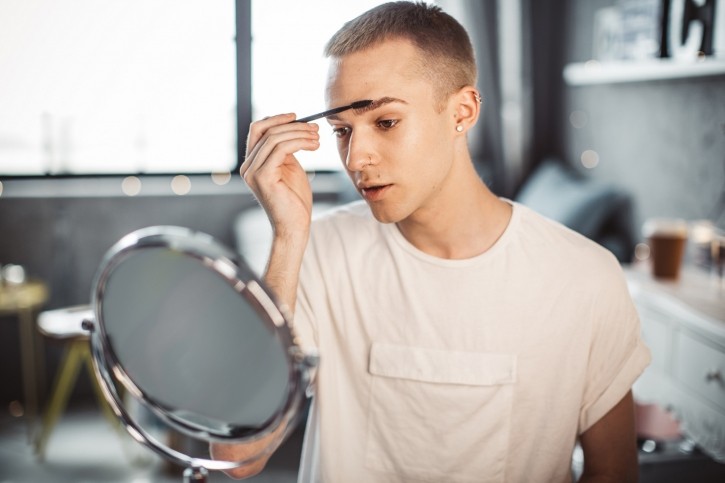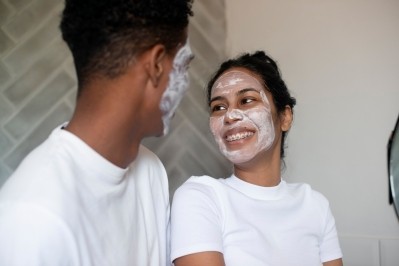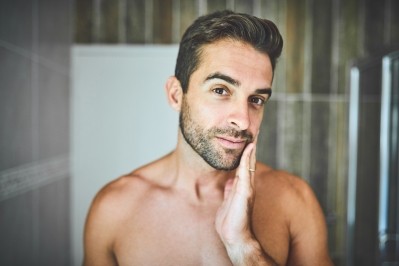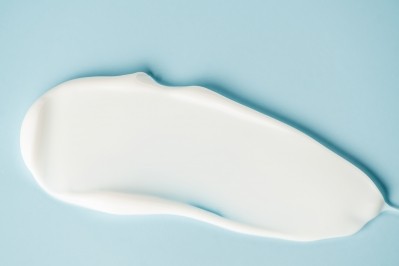72% of US male consumers between 18 and 34 use makeup, says Mintel survey

Global market research firm Mintel has reported that nearly half of US male consumers use cosmetic products. The data provides insights into the changing landscape of the cosmetics and beauty industry in the US men’s grooming sector. As the industry bears witness to a dramatic shift in consumer attitudes and behaviors, the research reveals that traditional stereotypes surrounding masculinity are being challenged and are giving way to a more diverse and inclusive market.
We spoke to Carson Kitzmiller, Senior Analyst, Beauty & Personal Care at Mintel, to learn more about Mintel's research on the evolving preferences and habits of male consumers in the US. Kitzmiller provided insights into what the data reveals: a paradigm shift in consumer behavior and the factors driving these changes, ranging from increased social media exposure to a growing emphasis on holistic wellness.
Kitzmiller’s professional career includes experience at personal care product retailer Bath & Body Works, roles in the beauty contract manufacturing industry, product development and project management, and, most recently, with Mintel’s beauty and personal care categories in the US market.
Data sourcing & key takeaways
To source and analyze the data used to inform Mintel’s recent reports, “Mintel commissioned exclusive consumer research through Kantar Profiles to explore consumer consumption and attitudes toward color cosmetics” and was “responsible for the survey design, data analysis, and reporting,” said Kitzmiller. Surveys were conducted online in November 2023 “among a sample of 2,000 adults aged 18+ with access to the internet,” she shared. Respondents were selected “by gender, age, household income, region, race, ethnicity, and parental status so that they are proportionally representative of the US adult population using the internet,” she explained.
Regarding key takeaways from Mintel’s Color Cosmetics—US—2024 Report, Kitzmiller began, “Topline data does showcase strong usage in at least some type of makeup use among men, with this being significantly driven by younger men aged 18-34 who are experimenting with the category."
The data demonstrated to analysts that “interest and usage in more neutral or ‘skin mimicking’ product types with younger men prioritizing their spend on products like facial powder, concealers and bronzers,” she stated, adding that while “certainly there are some that are experimenting more heavily,” the majority of male consumers in this category “are using these products to aid in neutral looks that showcase healthy-appearing skin.”
However, Kitzmiller further clarified that she believed “the bigger story is that the male demographic is expanding their routines to go beyond hygienic categories like body cleansing, haircare and deodorant, enlisting the support of buzzing categories like facial skincare and hairstyling products in a new way.”
This behavior is indicative of “a greater openness to gender neutral behaviors, an emphasis on self-expression through BPC use and an expanded definition of masculinity,” she explained, which “have laid the groundwork for use across all BPC segments, with these changes reflecting a greater societal transformation towards greater acceptance and understanding of diverse identities and experiences.”
In a more general sense, she continued, the data showed that across all beauty and personal care product categories, “shifting attitudes toward taking pride in their appearance, gaining knowledge about their unique skin/hair needs, and the macro definition of masculinity taking a new form have impacted male BPC users.”
These shifting attitudes have resulted in male consumers who now “explore, experiment, and align with brands that have similar values, using these products and brands to help express themselves to the world,” said Kitzmiller. "This new way of thinking and behaving is being ushered in by younger, technologically savvy generations like Gen Z and Gen Alpha.”
An additional key takeaway from the recent Mintel surveys is the finding that “purchase influencers across personal care categories among male demographics are a bit nuanced compared to female demographics: more so, they value premium brands, professional recommendations, natural ingredients and eco-friendly attributes at a higher clip,” she added. Amongst these nuances is the understanding that “while efficacy is still a priority, these attributes that showcase a brand’s values are becoming more important for this group as they seek trust, safety and validity from the brands and products they use,” she said.
The data analysis also revealed some surprising results for the Mintel team, such as the finding that “even with reported cosmetic use, eight in ten male cosmetic users aged 18-34 prefer to spend more time on their skin care routine over their makeup routine,” Kitzmiller shared, which “further shows a bigger shift towards an openness across all BPC segments.”
Another surprising finding was that “eight in ten male cosmetic users say their goal is to wear the least amount of makeup possible, which may be highlighting cosmetic usage as a way to cover imperfections as they work toward healthy skin,” she added. “This sentiment is pretty similar to that of female cosmetic users,” she explained, “and men are just adding cosmetics into their tool belt of options just as women are to express themselves to the world,” which was an unexpected revelation in male consumer behavior.
Most significant attitude shifts towards beauty & personal care
The most influential shift in male consumer behavior in cosmetics and personal care is the increased demand for personalized products and support. “As men grow increasingly conscious of their distinct skin and hair care needs, the demand for personalized products that address these specific concerns is rising, mirroring trends observed in the female beauty and personal care market,” said Kitzmiller.
“A significant portion of men now seek out personal care items designed with their unique requirements in mind,” she explained, “indicating a shift away from mere functionality and fragrance towards more customized solutions.” Further, she added, “expert advice is of particular interest among younger generations, giving validity to use through a personalized and professional lens.”
A second area where male consumer attitudes shifting toward cosmetics and personal care products are creating a notable impact is social media and peer influences. “The influence of social media and digital culture cannot be understated in shaping these new attitudes,” stated Kitzmiller, as “young men today are exposed to a wide array of perspectives and narratives that encourage a reevaluation of traditional masculinity.”
Therefore, she continued, “this exposure fosters a culture of experimentation and openness, allowing individuals to explore different facets of their identity without the constraints of rigid gender roles.”
A third area of significant impact is premium products and brands, which are shifting better to meet the interests and demands of younger male consumers. “Men's interest in premium personal care is driven by an awareness of how quality products significantly benefit their well-being,” Kitzmiller shared, and “they value high-quality, tailored formulations that boost both appearance and health, showing a preference for long-term advantages over quick fixes.”
This choice emphasizes a migration “towards sophistication, effectiveness, and ethical values in personal care,” she said, and “premium brands that provide proven benefits and uphold sustainability are particularly attractive to men dedicated to a thoughtful self-care regimen, showcasing a commitment to both personal and environmental wellness.”
A final area greatly impacted by male consumer attitude shifts in the beauty and personal care sectors is the rising popularity of holistic wellness routines. “The market for men's skincare and grooming is experiencing robust growth, fueled by individuals who prioritize health and consider grooming an integral part of their wellness regimen,” Kitzmiller explained, adding that “this movement towards embracing beauty in a more inclusive manner reflects a significant change in societal perceptions, establishing self-care as a practice embraced by all.”
Further, she continued, as “the importance of selecting products with beneficial ingredients and clear, positive claims grows,” the careful choices now being made by male consumers in this space underscore “a commitment to wellness, highlighting the necessity for products that meet health standards and align with personal values,” as well as “a conscientious approach that goes beyond surface care, aiming for overall well-being.”
Predictions for the future of male consumers, beauty & personal care
Moving forward, Kitzmiller stated, “although their routines may not be fully established, Gen Alphas’ beauty and personal care behaviors and interests have already begun, even among teen boys.” Considering that “the approach of younger generations towards beauty and personal care products is profoundly shaped by social media and peer influences,” she explained, there is, therefore, a growing “mindset that embraces experimentation” as well as “a noticeable shift towards discussing grooming practices openly with friends and a genuine interest in enhancing personal care expertise.”
As a result, she continued, “the purpose of personal care routines has evolved beyond mere hygiene – for the younger cohorts, these practices serve as avenues for relaxation, self-expression through their appearance and choice of brands, and as a means to foster social connections and status.” Therefore, “this is something that has been pretty widespread among female demographics, but will continue to increase among new male users, too,” Kitzmiller concluded.














